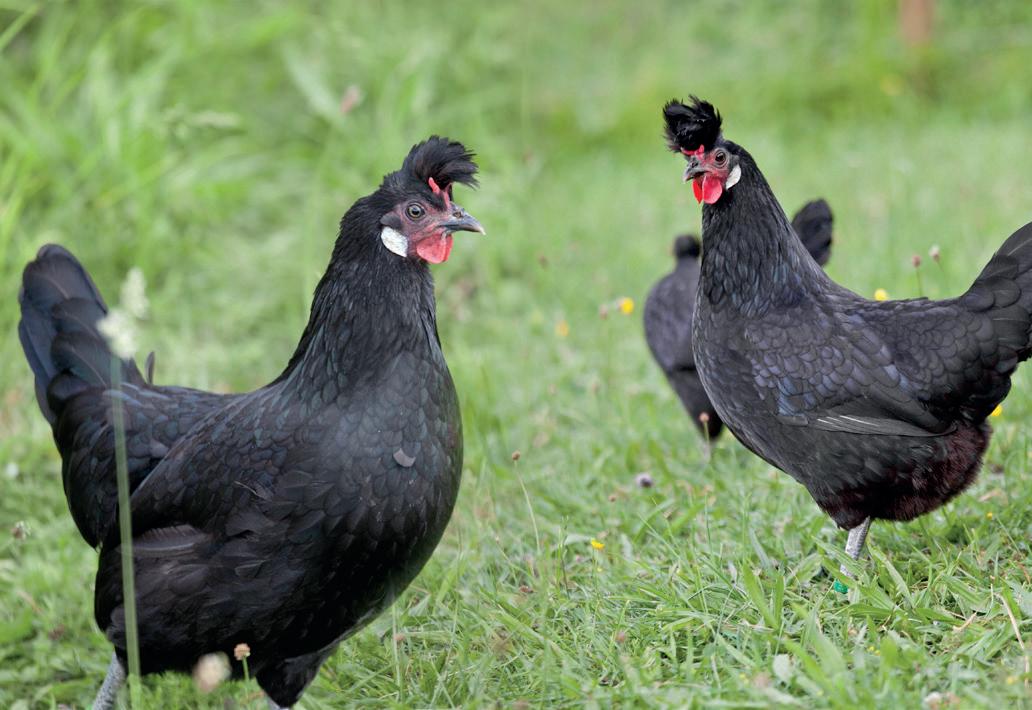
1 minute read
Appenzell Spitzhaube
Black Appenzell Spitzhaube hen (Philippe Ammann / ProSpecieRara)
Origin and development
Spitzhaube (“pointed bonnet”) hens are believed to have been bred from French and Dutch varieties in monasteries in the Swiss Alps as early as the 15th century. In 1935, Appenzell Spitzhaube hens were exhibited at the national poultry show, but the breed was subsequently increasingly neglected. In 1983, as these hens had become rare and were kept almost exclusively in the Appenzell region, a conservation programme was established in collaboration with breeders. Stocks of this lively breed increased again, and the Appenzell Spitzhaube is now found throughout Switzerland. However, a particular stronghold is still Eastern Switzerland, where the hens have always been affectionately known as “Tschüpperli”.
Description
The Appenzell Spitzhaube is small to medium-sized and delicately built. Both males and females have a narrow, forward-pointing, feathered crest, reminiscent of the bonnet which forms part of the traditional Appenzell feast day costume. In the hens, the horned comb is not pronounced and is frequently covered by the crest. In the young, the cocks are recognisable by the more pronounced horns and wattles, which become visible at 8–9 weeks. Unfortunately, not all of the original ten colour varieties have survived: still found today are the “gold”, “gold-spangled”, “white”, “black”, “silver-spangled”, “blue” and “chamois-spangled”. Spitzhaube hens lay at least 150 white-shelled eggs per year.

Appenzell Spitzhaube chickens are found in a number of colour varieties. Pictured here (appropriately in the Schwarzbubenland!) is a group of the very rare black variety (Philippe Ammann / ProSpecieRara)
Breeding objectives
h Robustness and cold-weather hardiness h Vigour h Longevity h Laying performance h Clean markings and attractive crest
References
Züchterverein für ursprüngliches Nutzgeflügel (www.zun-schweiz.ch) Kleintiere Schweiz (www.kleintiere-schweiz.ch) ProSpecieRara (www.prospecierara.ch)










